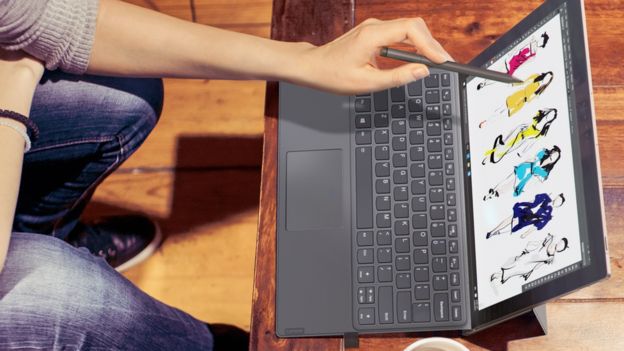The gadgets got bolted inside when a power cut dove the show corridor into haziness.
 Having to always keep individual gadgets charged is a disturbance we are all, at this point, acquainted with - even gadget producers are disappointed.
Having to always keep individual gadgets charged is a disturbance we are all, at this point, acquainted with - even gadget producers are disappointed. Amid Huawei's question and answer session, the company's CEO recognized that battery life was among the best dissensions clients make about cell phones.
He went ahead to clarify this is the reason Huawei's new Mate 10 Genius incorporated a greater battery than many opponents - at 4,000 milliamp-hour (mAh) limit.
Seeing the world's biggest customer hardware public exhibition quickly stumbled by a power outage maybe influences contraptions with particularly long battery life to appear to be all the additionally engaging.
Provided that this is true, another whirlwind of gadgets at CES this year are putting forth to outlive their energy hungry brethren.
Take Lenovo's Miix 630 tablet, a two-in-one that accompanies a console.
It is intended to last up to 20 hours on a solitary charge on account of is control productive Qualcomm processor, a chip at first intended for cell phones.
That claim from Lenovo hasn't yet been tried, yet it's an enticing guarantee of a more battery-certain future.
that it gives to the creators of customer devices.
Qualcomm has been taking a shot at enhancing effectiveness in the different parts at the organization's public interview this week, one official said that the association's new Bluetooth framework on-chip sliced power use by 65%.
Thus, remote earphones could last about three times as long on a solitary charge, he recommended.
More from CES:
Kodak takes off on KodakCoin and Bitcoin designs
Power cut hits Las Vegas tech appear
Swarm of automatons illuminates Vegas night sky
At the point when will AI convey for people?
Another firm making comparable headways, this time for chips utilized as a part of purported web of-things gadgets, is Sigma Plans.
It declared that its most recent arrangement of processors, the Z-Wave 700 line, could permit things like wi-fi associated sensors installed in furniture and dividers to most recent 10 years on one coin cell battery.
f there's anyplace that tests the life expectancy of a battery-controlled gadget, it's CES itself.
There's regularly a race to connect to at the couple of accessible charging focuses and guests to the tech demonstrate frequently end up messaging a minute ago rendez-vous points of interest to partners as their telephones bite the dust.
BBC Snap's Lara Lewington says keeping her telephone energized has been "a bad dream".
"It's for a situation which should give it two full charges yet unavoidably something turns out badly," she clarifies.
"I'm always utilizing the web with the goal that's depleting the battery.
"When you're caught up with circling a disorderly place attempting to complete burdens, you're attempting to control your telephone so you get distrustful about utilizing it."
On the off chance that exclusive devices had as much vitality as CES participants.
For Ben Wood, an examiner at CCS Understanding, the incongruity of this is while battery life might enhance in a few devices, the batteries themselves aren't.
"To influence things to last longer you outline around [the battery], you plan processors or screens that draw less power," he clarified.
He included that PC creators, for example, Lenovo and HP were drawing motivation from cell phones when pondering how to make tablets and PCs less eager for power.
Cell phones, obviously, have throughout the previous 10 years or so been stretched as far as possible as far as proficiency since they should depend on moderately little and level installed batteries.
For anybody genuinely worried about coming up short on juice, the most recent versatile battery packs for energizing gadgets from mains supplies were in plain view at CES this year as well.
They incorporated a monster one from Duracell involving an extensive corrosive battery.
Tech news site Gizmodo, which spotted the device on the show floor, calculated that it could recharge an iPhone X more than 48 times.
Finally, PC gaming hardware specialist Razer has come up with an interesting way of powering their new wireless mouse - take the battery out entirely.
It is exhibiting a wired mouse mat that generates a magnetic field, which powers electronics inside the Mamba mouse directly.
"While other companies have attempted to do wireless charging for mice, they have been unable to achieve true wireless power as their mice still need a battery to be charged," said chief executive Min-Liang Tan.
No wonder Razer is proud of itself - tech firms are desperate to free us from the chore of regularly re-charging batteries because they know it could result in a far greater appreciation of their products, according to Ben Wood.
"This is the Holy Grail," he said.
"There's this constant race to see who can optimise the power consumption while at the same time deliver new capabilities."





No comments:
Post a Comment